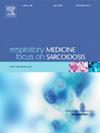Association between depression, anxiety and long-term healthcare resource utilization in patients with pulmonary embolism
IF 3.5
3区 医学
Q2 CARDIAC & CARDIOVASCULAR SYSTEMS
引用次数: 0
Abstract
Background
To date, the utilization of healthcare resources for complications associated with acute pulmonary embolism (PE) have received no attention. This study aimed to explore healthcare utilization and its association with depression and anxiety up to 2 years after in-patient treatment for PE.
Methods
Data from the German ‘Lungenembolie Augsburg (LEA)' cohort study was used. Baseline characteristics of the adult patients with PE were collected through an interview during hospital stay and via chart review. Participants completed postal questionnaires 3, 6, 12, and 24 months after their PE event containing questions on healthcare utilization. Depression and anxiety were assessed using the Hospital Anxiety and Depression scale (HADS-D). Negative binomial mixed models were used to investigate the associations between depression and anxiety scores (exposures) and the number of hospitalizations, hospital outpatient clinic visits, general practitioner consultations and medical specialist visits with outcomes adjusted for potential confounders.
Results
Out of 569 patients (55 % male, mean age 63.0 ± 14.5 years), 18.3 % had at least mild symptoms of depression and 21.3 % had at least mild symptoms of anxiety at the initial hospitalization. During the first 3 months after hospital discharge, 28.1 % of the patients had at least one hospital readmission. Higher HADS-D depression scores were significantly associated with more hospitalizations (p = 0.0063), hospital outpatient clinic visits (p = 0.0009) and visits to general practitioners (p = 0.0434). Higher HADS-D anxiety scores were significantly associated with more hospitalizations (p = 0.0413) and visits to medical experts (p = 0.0268).
Conclusions
Depression and anxiety were significantly associated with increased healthcare utilization in patients with PE.
肺栓塞患者抑郁、焦虑与长期医疗资源利用的关系
到目前为止,与急性肺栓塞(PE)相关的并发症的医疗资源的利用还没有得到重视。本研究旨在探讨PE住院治疗2年后的医疗保健利用及其与抑郁和焦虑的关系。方法采用德国“Lungenembolie Augsburg (LEA)”队列研究数据。通过住院期间的访谈和图表回顾收集成年PE患者的基线特征。参与者在体育活动结束后3、6、12和24个月完成邮寄问卷,其中包含有关医疗保健利用的问题。采用医院焦虑抑郁量表(HADS-D)评估抑郁和焦虑。使用负二项混合模型来调查抑郁和焦虑评分(暴露)与住院次数、医院门诊就诊次数、全科医生咨询次数和医学专家就诊次数之间的关系,并对潜在混杂因素进行了调整。结果569例患者(55%为男性,平均年龄63.0±14.5岁)中,18.3%的患者在初次住院时至少有轻度抑郁症状,21.3%的患者至少有轻度焦虑症状。出院后3个月内,28.1%的患者至少再入院一次。较高的HADS-D抑郁评分与住院次数(p = 0.0063)、医院门诊就诊次数(p = 0.0009)和全科医生就诊次数(p = 0.0434)显著相关。较高的HADS-D焦虑评分与住院次数(p = 0.0413)和就诊次数(p = 0.0268)显著相关。结论肺心病患者的抑郁和焦虑与医疗保健利用显著相关。
本文章由计算机程序翻译,如有差异,请以英文原文为准。
求助全文
约1分钟内获得全文
求助全文
来源期刊

Respiratory medicine
医学-呼吸系统
CiteScore
7.50
自引率
0.00%
发文量
199
审稿时长
38 days
期刊介绍:
Respiratory Medicine is an internationally-renowned journal devoted to the rapid publication of clinically-relevant respiratory medicine research. It combines cutting-edge original research with state-of-the-art reviews dealing with all aspects of respiratory diseases and therapeutic interventions. Topics include adult and paediatric medicine, epidemiology, immunology and cell biology, physiology, occupational disorders, and the role of allergens and pollutants.
Respiratory Medicine is increasingly the journal of choice for publication of phased trial work, commenting on effectiveness, dosage and methods of action.
 求助内容:
求助内容: 应助结果提醒方式:
应助结果提醒方式:


